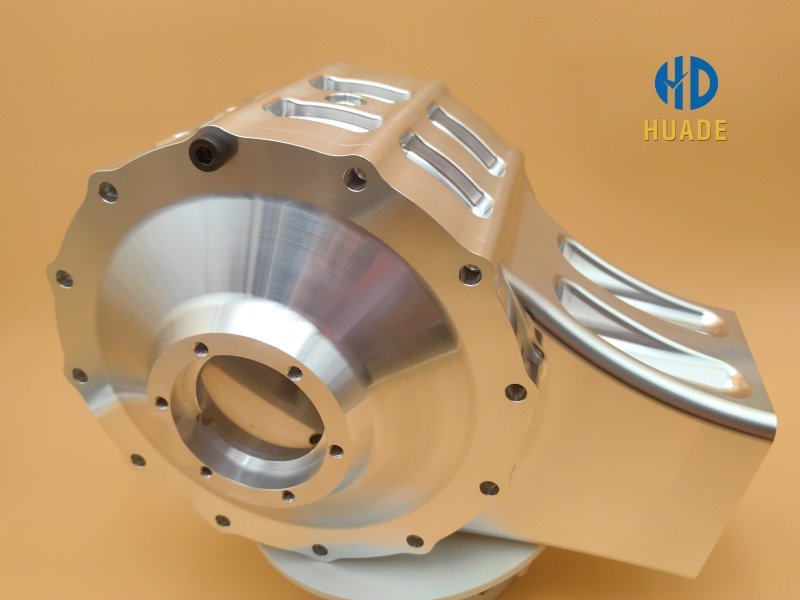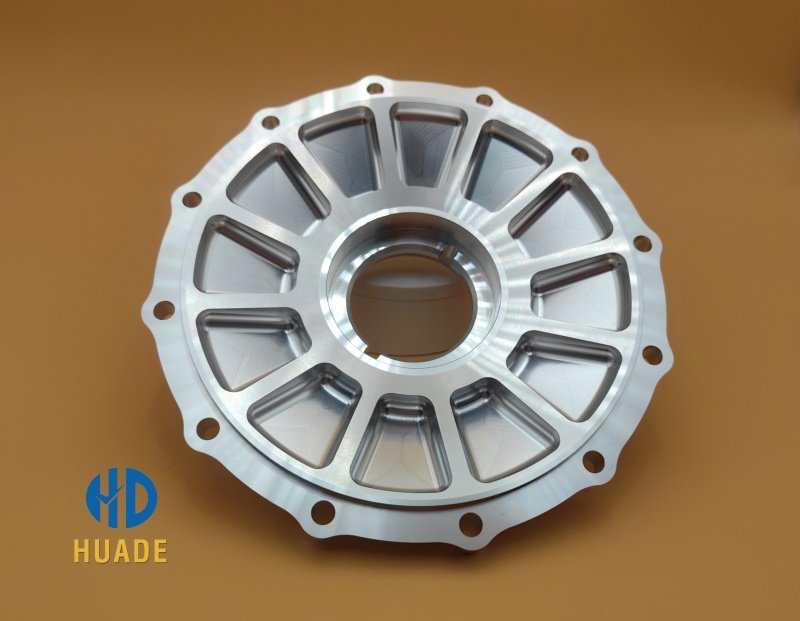Table of Contents
Introduction: Finishing Is Part of the Function
In CNC machining, accuracy does not stop at the toolpath. Once a part is milled or turned to tolerance, finishing determines how well it resists corrosion, wear, and real-world abuse. Plating is one of the most widely specified finishes because it changes the surface chemistry and performance without changing the base material selection. Among the many options, nickel vs zinc plating is a recurring decision for engineers ordering CNC parts, and so is the broader comparison of nickel plated vs chrome plated and nickel chrome plating vs chrome plating for components that must look good and last long.
This guide explains how each finish works, what it adds to a CNC-machined component, how it interacts with surface roughness (Ra/Rz) and tolerance, and how to choose the most cost-effective and reliable path for your application.

What Plating Actually Does for a CNC Part
Plating adds a thin, controlled metallic layer that improves one or more of the following:
- Corrosion resistance (barrier or sacrificial protection)
- Wear and abrasion resistance (harder surface, lower friction)
- Electrical properties (conductivity or shielding)
- Appearance (brightness, reflectivity, color tone)
- Repair or rework (build-up and subsequent grinding/honing)
Because plating adds thickness—often 5–25 μm for functional layers—it interacts with tolerances, threads, and press fits. That is why machinists finish-machine critical dimensions, then mask or compensate for the measured plating build to stay within spec.
Nickel vs Zinc Plating: Core Comparison for CNC Buyers
When people search nickel vs zinc plating, they want a practical answer. The short version is: pick nickel when you need a hard, wear-resistant barrier with good chemical stability and premium appearance; pick zinc when you need low-cost, sacrificial corrosion protection for steel hardware in everyday service. The long version follows.
✅ Nickel vs Zinc Plating Comparison Table
| Feature | Nickel Plating | Zinc Plating |
|---|---|---|
| Corrosion Resistance | Very high, long-term durability | Good, but weaker in harsh environments |
| Surface Hardness | Harder, provides wear resistance | Softer, less resistant to scratches |
| Appearance | Smooth, slightly yellowish or bright | Silvery to bluish tone |
| Cost | Higher | Lower (cost-effective option) |
| CNC Application | Aerospace, automotive, electronics | Fasteners, hardware, low-cost parts |
How Nickel Plating Works
Electroless or electrolytic nickel deposits form a dense barrier layer that resists wear and provides a bright, uniform finish. Electroless nickel (EN) coats uniformly—even inside complex geometries—making it popular for tight-tolerance CNC parts. Nickel resists alkalis and many organic solvents better than zinc and can be engineered for high hardness (with heat treatment) and controlled phosphorus content.
Typical benefits
- Hardness up to ~600–1,000 HV (with heat treatment)
- Excellent wear resistance and galling resistance
- Good chemical resistance; stable in many industrial fluids
- Premium appearance; uniform coverage (especially EN)
- Useful for shafts, bushings, molds, and precision mechanisms
Typical considerations
- Higher cost than zinc
- Barrier protection (not sacrificial)
- Adhesion and hydrogen embrittlement must be controlled by process
How Zinc Plating Works
Zinc provides sacrificial protection on steel: it corrodes preferentially, protecting the base metal underneath. Post-treatments (passivation, top coats, sealers) can dramatically extend salt-spray life while offering different color tones (clear, yellow, black).
Typical benefits
- Cost-effective corrosion resistance for fasteners and brackets
- Sacrificial action protects steel in scratches and edges
- Widely available; fast turnaround for high-volume hardware
- Good choice for general-purpose CNC parts used outdoors
Typical considerations
- Softer than nickel; not a wear coating
- Aesthetics are functional but not premium
- Thickness uniformity is good but not as uniform as electroless nickel
- Requires thoughtful design for long-term durability in harsh environments
Quick Decision Snapshot
- Need wear resistance + premium look + chemical stability? Choose nickel plating.
- Need economical corrosion resistance on steel? Choose zinc plating.
- Need both shine and hardness for consumer-facing parts? Consider chrome systems (next sections).
Nickel Plated vs Chrome Plated: Which Fits the Use Case?
Another frequent question is “nickel plated vs chrome plated”. These terms describe different performance goals.
✅ Nickel Plated vs Chrome Plated Comparison Table
| Feature | Nickel Plated Parts | Chrome Plated Parts |
|---|---|---|
| Color/Tone | Slightly yellow, warm tone | Bright, mirror-like, bluish tone |
| Thickness | Thicker, more protective | Thinner, decorative and wear-resistant |
| Durability | Good corrosion & wear resistance | Superior hardness & scratch resistance |
| CNC Use Cases | Industrial tools, connectors, housings | Automotive trim, bike/motorcycle parts |
Nickel Plated
Nickel plated CNC parts are specified when the application demands function first. The coating can be bright or matte, but its standout property is hardness and wear resistance, especially with heat-treated electroless nickel. It is ideal for sliding fits, bushings, bearing surfaces, tooling, and machinery components in oils, solvents, and other industrial fluids. Nickel also offers a smoother base that can be further polished or over-coated.
Chrome Plated
Chrome plating, particularly decorative chrome, is selected when appearance and surface hardness both matter. The surface finish is mirror-like; the hardness is high. Decorative chrome is thin and is often paired with a leveling layer (see below). Hard chrome (thicker, usually for industrial cylinders and shafts) delivers outstanding wear resistance and low friction but requires strict process control to avoid micro-cracking or edge-burning.
Bottom line: for industrial function with a refined but not “mirror” look, nickel plated excels. For consumer-facing parts or where a mirror finish is demanded, chrome plated is the common choice—often in a layered system.
Nickel Chrome Plating vs Chrome Plating: Why the Stack Matters
The phrase “nickel chrome plating vs chrome plating” highlights a crucial distinction:
- Nickel-chrome plating: a two-layer system—nickel first (for leveling and corrosion protection), then a very thin chrome “flash” for hardness and a brilliant, blue-white luster. This is the classic automotive trim stack because it looks great and lasts longer than chrome alone.
- Chrome plating alone (decorative chrome without a nickel base) lacks the underlayer that provides corrosion resistance and leveling. It shines, but its protective performance is weaker.
For CNC-machined housings, levers, knobs, motorcycle and bicycle accessories, and consumer hardware, a nickel-chrome stack often gives the best balance of durability + aesthetics. For industrial shafts where thickness and wear are the only goals, hard chrome without decorative nickel may still be appropriate.
Surface Roughness (Ra/Rz), RMS, and Why Pre-Plate Finishing Matters
Plating quality starts with machining quality. Three practical rules help designers and machinists avoid surprises:
- Specify achievable pre-plate roughness. If you need a final Ra of 0.8 µm after plating, ask your vendor what pre-plate Ra is required to hit that number once the coating levels and fills.
- Understand Ra vs Rz vs RMS. Ra is the arithmetic average roughness; Rz focuses on peak-to-valley extremes; RMS is a legacy measure common in North America. Conversion charts exist, but you should document one standard in drawings to avoid ambiguity.
- Account for thickness in tolerance chains. Plating adds material. On tight bores or shafts, either mask, undersize/oversize the metal, or finish-hone after coating. Threads may need masking or thread-gauging after the process.
A smooth, consistent pre-plate surface dramatically reduces rejects, gives better adhesion, and makes bright decorative finishes truly bright.
Real-World Example: Removing Chrome Plating from Wheels
A familiar service request in automotive refinishing is remove chrome plating from wheels before powder coating or re-plating. The process typically involves controlled chemical stripping followed by gentle blasting to provide a consistent anchor profile. The lesson for CNC parts is the same: finishing is a lifecycle consideration. Sometimes the right move is not adding a coating but removing a failed or inappropriate one so the part can be restored or upgraded.

Cost, Turnaround, and Environmental Considerations
- Cost: zinc is generally the least expensive functional plating; electroless nickel and layered nickel-chrome cost more due to chemistry control and cycle time. Hard chrome is cost-effective for wear, but polishing/grinding after plating adds time.
- Speed: zinc and bright nickel are fast for standard hardware; electroless nickel cycles can be longer but coat complex geometries uniformly, which may remove secondary ops.
- Compliance: modern lines use trivalent chrome for decorative finishes and control hex-chrome risks for hard chrome. Ask your supplier for RoHS/REACH documentation when needed.
Application-Driven Recommendations
To translate nickel vs zinc plating and the chrome comparisons into buying decisions for CNC parts, use an application lens:
General-Purpose Steel Fasteners and Brackets
- Recommended: zinc plating with passivation for outdoor or humid use.
- Why: sacrificial protection at low cost; easy to source for high volumes.
Precision Mechanisms and Wear Surfaces
- Recommended: electroless nickel (heat-treated if needed).
- Why: uniform coverage, high hardness, excellent dimensional control.
Consumer-Facing Metal Components (premium look)
- Recommended: nickel-chrome plating (nickel base + thin chrome).
- Why: superior appearance with better corrosion resistance than chrome alone.
Hydraulic Rods, Industrial Shafts, Dies
- Recommended: hard chrome (with post-grind/hone).
- Why: exceptional wear resistance and low friction under high loads.
Coastal or Road-Salt Environments
- Recommended: zinc with high-performance top coats or electroless nickel.
- Why: sacrificial zinc helps in scratched areas; EN offers barrier protection with superb uniformity for complex parts.
Design for Plating: Tips for CNC Drawings
- Call out the finish by name and thickness (e.g., “Electroless Nickel, 10–15 µm, post-bake for hydrogen relief”).
- Define the measurement condition (before or after plating) for critical dimensions.
- Mark masked areas (bearing fits, threads) to avoid unwanted build-up.
- Pick one roughness standard (Ra or Rz or RMS) on the drawing and keep it consistent.
- Specify acceptance tests where appropriate (salt-spray hours, adhesion, hardness).
- Plan the process early: confirming the finish during RFQ prevents redesigns and missed deadlines.
Frequently Asked Buyer Questions
Q: Is zinc plating enough for outdoor parts?
A: For light to moderate outdoor exposure, zinc with a good passivation/topcoat is cost-effective. For harsh marine or chemical exposure, consider electroless nickel or stainless.
Q: Does nickel affect electrical performance?
A: Yes. Nickel is conductive and can be paired with copper underlayers when specific resistance targets or solderability are needed.
Q: Can I hold ±0.01 mm after plating?
A: Yes, if the vendor compensates dimensions pre-plate, masks critical surfaces, or finish-hones/grinds post-plate. Discuss your tolerance stack early.
Q: When is chrome alone acceptable?
A: Hard chrome for industrial wear is common. For decorative chrome, adding a nickel underlayer significantly improves corrosion life.
Conclusion: Choosing with Confidence
If you remember nothing else, keep these three decisions in mind:
- Nickel vs zinc plating: nickel for hardness, wear, and premium appearance; zinc for low-cost sacrificial corrosion resistance on everyday steel parts.
- Nickel plated vs chrome plated: nickel for functional, industrial CNC parts; chrome for mirror aesthetics or hard-chrome wear resistance.
- Nickel chrome plating vs chrome plating: the layered nickel-chrome stack outperforms chrome alone in decorative durability because nickel provides leveling and corrosion protection under the thin chrome cap.
Plating is not an afterthought—it is part of the design. Specify the finish, thickness, and roughness standard on your drawing; plan masking and tolerance strategy with your vendor; and select the coating that matches the real environment your CNC part will face. Done right, finishing turns precision metalwork into reliable products that survive the elements, the factory floor, and the customer’s expectations.
Ready to specify plating for your CNC parts?
Send us your drawings with required finish (nickel, zinc, nickel-chrome, or hard chrome), thickness, and roughness target. Our team will propose the most economical path and confirm compensation for plating build-up before machining starts.
